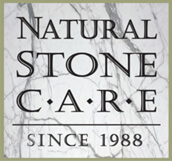Taking the Mystery Out of Terrazzo
Many of us remember terrazzo floors from childhood schools we attended or hospital corridors that we may have visited. Although many terrazzo floors have muted colors, terrazzo actually can be made in limitless color choices. With its environmental friendliness and versatility, it is a smart flooring choice for both residential and commercial properties. Understanding terrazzo, it’s history, and care will help direct design and maintenance choices wherever it may be found, from historic to modern spaces
A Little Bit of History
All architectural stone is graded to fall somewhere on the Mohs Scale of Hardness, with talc on the very soft end and diamond on the very hard end. All other stones fall somewhere in the middle. Marble is about a four or five on the Mohs Scale, whereas granite is about an eight.
The bad news is that softer stones will be scuffed and abraded much easier than harder stones, like granite or quartz. On the bright side, softer stones will also respond to repolishing very easily.
Modern Terrazzo
Twentieth century terrazzo was almost always sealed with film forming finishes to prevent staining. In the 1970’s, with the onset of more complex polymer technologies emerging, a new generation of terrazzo using those polymers and then epoxy matrix completely changed the game. This new mixture allowed the terrazzo to be applied at depths of 1/4″ to 3/8″ rather than the standard 1-2″ in the old style floors.
Terrazzo has come a long way. Aggregates in new terrazzo are not limited to stone chips and can include mother of pearl, abalone, post consumer glass, porcelain, and mirrors chips. Custom designs can be achieved with the use of separators installed on the substrate that allow many different mixes of color in the same floor. These strips can be made of zinc, brass, and even colored plastic.
Caring For Terrazzo
Property owners and managers should be aware of terrazzo strengths, weaknesses, and best maintenance practices. Both cementitious and epoxy terrazzo can be maintained with a natural shine achieved using the same polishing processes used on marble and other natural stone. Glossy waxes and shiny finishes on terrazzo look good at first, but eventually become scratched, trap dirt, and turn yellow. Natural polishing methods not only can achieve a beautiful shine, but eliminate the need for stripping and waxing. In very high traffic situations, or in facilities such as schools or hospitals where nonslip and antimicrobial floors are important, a high performance coating may be beneficial
This is one of a series of articles written and published on behalf of surpHaces Partners.



